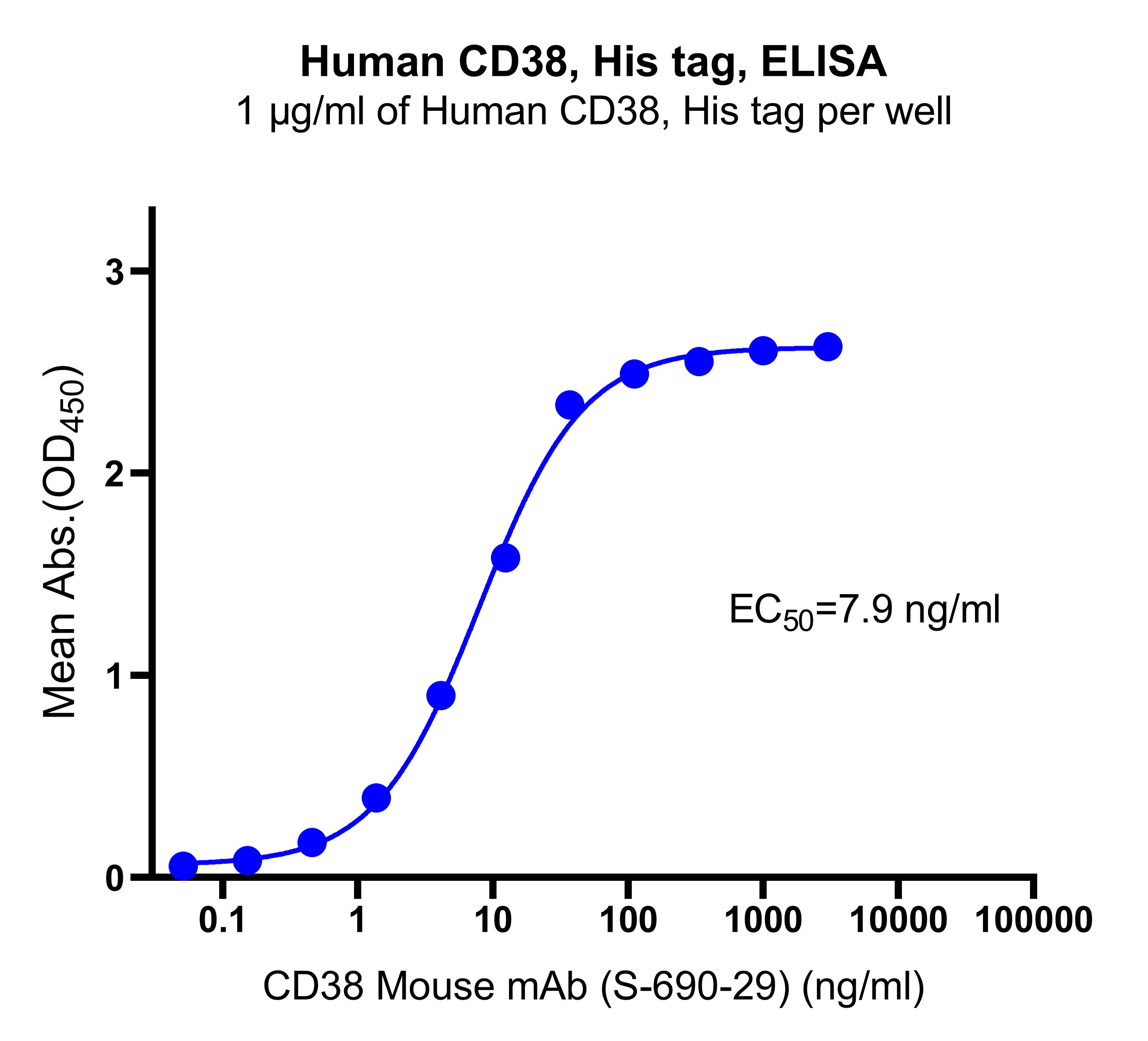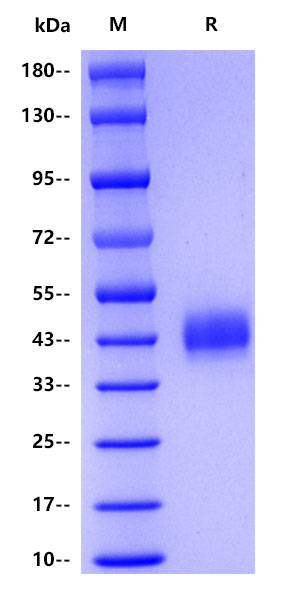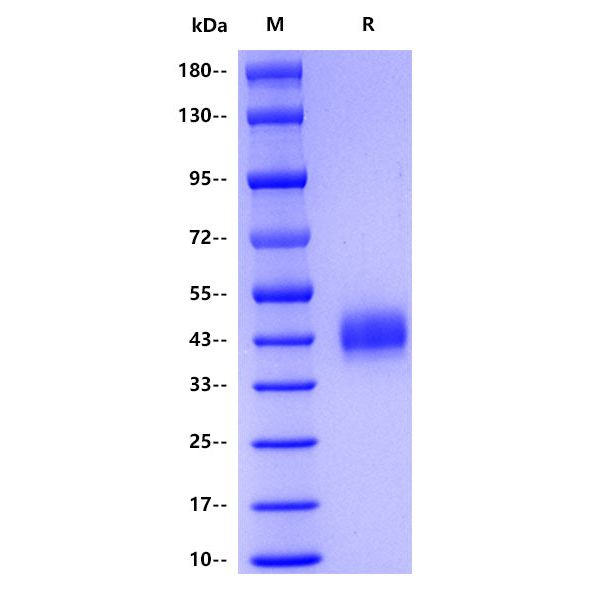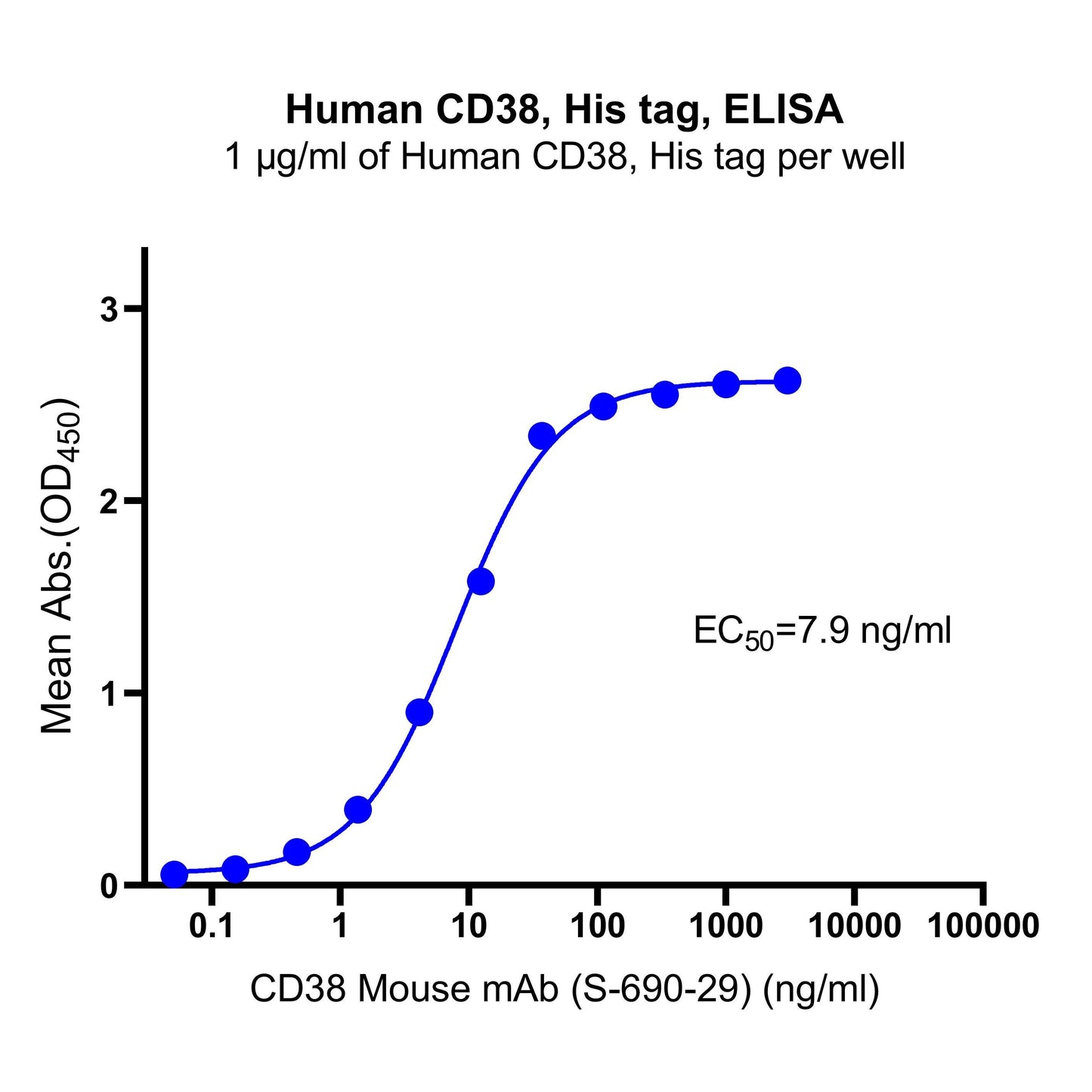Immobilized Human CD38, His tag at 1 μg/mL (50 μL/well) can bind CD38 Mouse mAb (S-690-29) (S0B0395) with EC50 of 6.880-9.268 ng/ml.
Product Details
Product Details
Product Specification
| Species | Human |
| Synonyms | 2'-phospho-ADP-ribosyl cyclase, 2'-phospho-ADP-ribosyl cyclase/2'-phospho-cyclic-ADP-ribose transferase (EC:2.4.99.20), 2'-phospho-cyclic-ADP-ribose transferase, ADP-ribosyl cyclase 1 (ADPRC 1), Cyclic ADP-ribose hydrolase 1 (cADPR hydrolase 1), T10 |
| Accession | P28907 |
| Amino Acid Sequence | Protein sequence(P28907, Val43-Ile300, with C-10*His) VPRWRQQWSGPGTTKRFPETVLARCVKYTEIHPEMRHVDCQSVWDAFKGAFISKHPCNITEEDYQPLMKLGTQTVPCNKILLWSRIKDLAHQFTQVQRDMFTLEDTLLGYLADDLTWCGEFNTSKINYQSCPDWRKDCSNNPVSVFWKTVSRRFAEAACDVVHVMLNGSRSKIFDKNSTFGSVEVHNLQPEKVQTLEAWVIHGGREDSRDLCQDPTIKELESIISKRNIQFSCKNIYRPDKFLQCVKNPEDSSCTSEIGGGGSHHHHHHHHHH |
| Expression System | HEK293 |
| Molecular Weight | Theoretical:31.5 kDa Actual:40-50 kDa |
| Purity | >96% by SDS-PAGE |
| Endotoxin | <1EU/mg |
| Tag | with C-10*His |
| Physical Appearance | Lyophilized Powder |
| Storage Buffer | Lyophilized from a 0.2 μm filtered solution of 0.2M PBS, 1mM EDTA, pH7.5. |
| Reconstitution | Reconstitute no more than 2 mg/mL according to the size in deionized water after rapid centrifugation. |
| Stability & Storage | 13 months from date of receipt, -20 to -70 °C as supplied. 6 months, -20 to -70 °C under sterile conditions after reconstitution. 1 week, 2 to 8 °C under sterile conditions after reconstitution. Please avoid repeated freeze-thaw cycles. |
Background
CD38 (cluster of differentiation 38), also known as cyclic ADP ribose hydrolase is a glycoprotein found on the surface of many immune cells (white blood cells), including CD4+, CD8+, B lymphocytes and natural killer cells. CD38 also functions in cell adhesion, signal transduction and calcium signaling. In humans, the CD38 protein is encoded by the CD38 gene which is located on chromosome 4. CD38 is a paralog of CD157, which is also located on chromosome 4 (4p15) in humans. CD38 is most frequently found on plasma B cells, followed by natural killer cells, followed by B cells and T cells, and then followed by a variety of cell types.
Picture
Picture
Bioactivity

SDS-PAGE

RP-464_CD38_P28907




